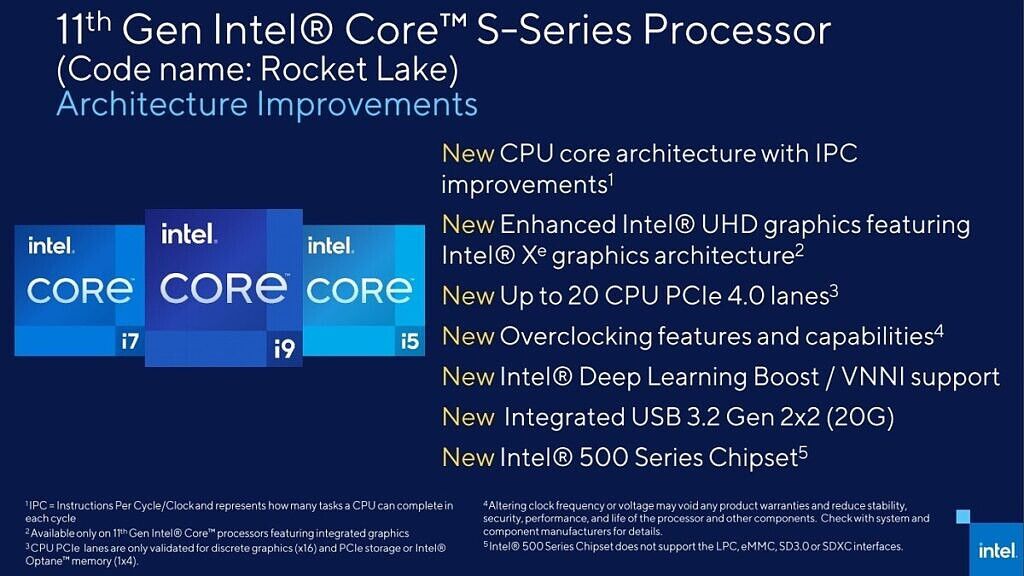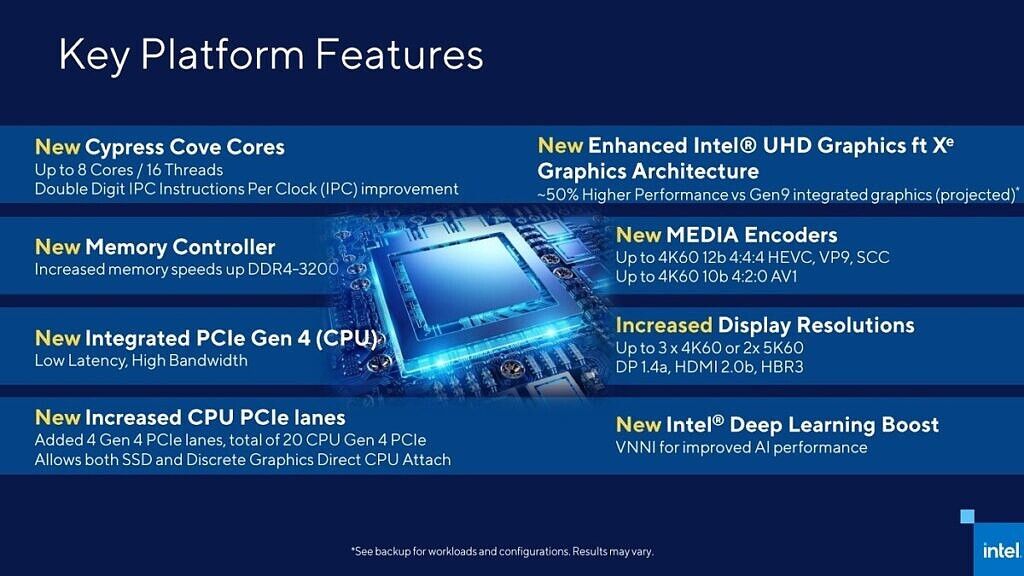Earlier this month, Intel announced that its 11th-Generation desktop processors would debut early next year. But, at the time, the chipmaker had only revealed limited details about the upcoming processor family. And while the launch is still a couple of months away, we have now received new information via a press release about the architecture of the next-gen chips. The new Rocket Lake series is set to arrive by the first quarter of 2021, and it will focus on bringing more performance to gamers and PC enthusiasts.
Intel is aiming for double-digit percentage IPC (Instructions Per Clock) performance improvements, which should be similar to the performance jump from Comet Lake to Ice Lake mobile processors. The new chips will use a new architecture called Cypress Cove for improved hardware and software efficiency and increased performance. The new range will yet again be based on the 14nm architecture, but Intel will backport some of the features from the 10nm Sunny Cove.
The Rocket Lake series will also offer improved Intel UHD graphics thanks to the new Xe Graphics architecture. It is expected to support the same socket (LGA1200) and motherboard compatibility as the current 10th-Gen Comet Lake processors. However, the company will launch new 500-series motherboards as well. Notably, the top of the line processor will now max out at 8-cores, unlike the 10-core Core i9-10900k processor option, but will have the same 125W TDP with a top turbo boost of 250W.
The company had already confirmed the support for PCIe 4.0, and now we know that it will offer 20 PCIe 4.0 lanes. This would essentially mean faster SSD storage speeds and improvements in speeds for other PCIe based hardware, including GPUs. The memory controller will also see a boost in speeds going up to DDR4-3200. Intel will also offer Deep Learning Boost technologies for AI and ML acceleration, support for Vector Neural Network Instructions (VNNI), which will finally bring AVX-512 to desktop users. Other features include new media controllers, including HEVC (VP9) at up to 4K60 12-bit 4:4:4, and AV1 at 4K60 10-bit 4:2:0. There is also support for DisplayPort 1.4a, HDMI 2.0b, and HBR3, along with support for three 4K60p or two 5K60p displays.



